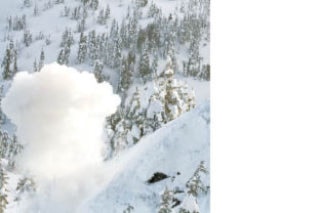An avalanche awareness event on Mount Washington over the weekend couldn’t have come at a better time.
The avalanche danger in B.C.’s mountain ranges is high and recent snow fall has heightened the need to bring the message of safety to the forefront.
Statistics show each year, on average, 14 people across Canada die in avalanches and claimed 12 lives across Canada in 2010 – all but one in British Columbia.
Every winter more and more adventurers head up to play in Canada’s beautiful snowy mountains but every year people perish or are seriously injured in the mountains, from being swept to their deaths in avalanches.
Avalanche awareness events are being held throughout the country, including Mount Washington.
The Canadian Avalanche Association wants to spread the word on how to play safe in the snow and the public is invited to come on up and learn some safety skills.
In its ongoing effort to prevent tragedies, the Vancouver Island avalanche centre has launched several new tools to help outdoor enthusiasts plan safe snow excursions including a Beacon Basin at Mount Washington.
Leah Knutson, special events co-ordinator at Mount Washington says they have partnered with the Island Alpine Guides and Backcountry Access to bring the first Backcountry Access Beacon Training Park to Vancouver Island.
Beacon Training Parks are created to make it easier for people to practice using their transceivers.
You can test your beacon finding skills with friends as the park features four to eight permanently buried transmitters.
Knutson said it’s an awesome education tool.
“It promotes transceiver use and it’s a great way to practice your skills because you can do multiple searches.”
She said they will have some practice beacons on the hill and the public is invited to learn about the educational tool which is located across from the Whiskey Jack Chair unload.
More than ever, young people are attracted to the lure of the backcountry just beyond the boundary of the ski resort. They seek greater challenges and are often lured unknowingly into avalanche terrain.
While avalanches can happen at any time under various conditions, statistics from the C.A.A. show a definite trend in Canadian avalanche accidents in terms of fatalities, gender, location and other factors. A typical avalanche victim is a male in his 20s, and a backcountry skier with a 73 per cent chance of being killed during the months of January, February and March.
Fifty five per cent of avalanches are triggered by people on foot and and 32 per cent while on a snowmobile.
There are common mistakes many backcountry recreationists make that put them at increased risk — poor trip preparation, lack of knowledge of recognizing avalanche terrain, inability to assess snow stability and unskilled backcountry search and rescue techniques.
With those statistics in mind the public is invited to hone their avalanche safety skills at the various clinics and demos being hosted on the hill by avalanche professionals and volunteers.
